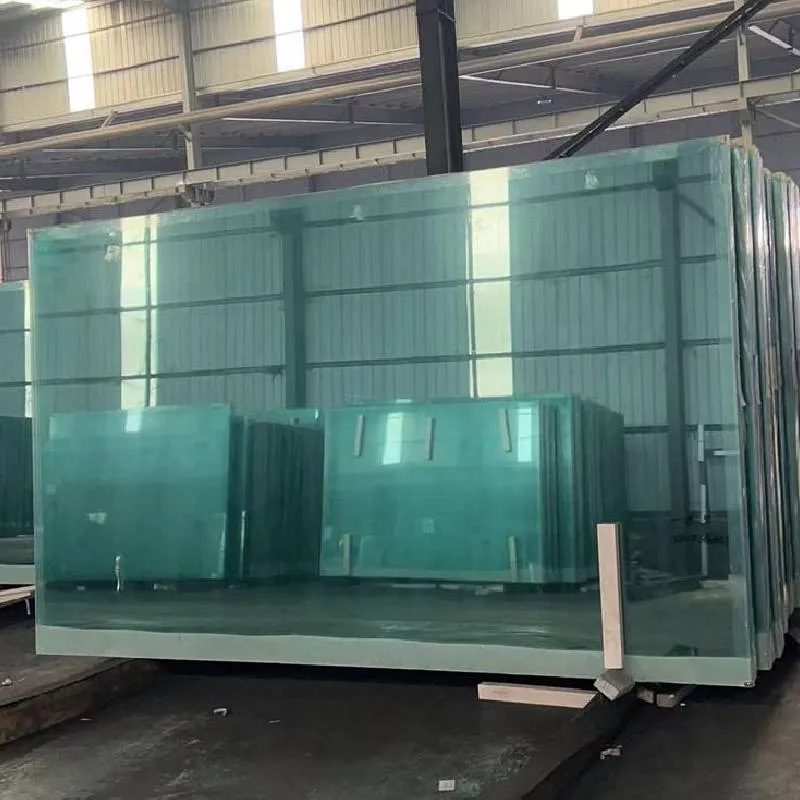The Benefits and Applications of Toughened Glass Windows
In recent years, toughened glass has become increasingly popular in both residential and commercial architecture. Known for its durability, safety, and aesthetic appeal, toughened glass windows offer a plethora of advantages that are reshaping modern building design.
Toughened glass, also known as tempered glass, is produced through a special thermal treatment process that enhances its strength. This process involves heating the glass to high temperatures and then rapidly cooling it, which increases its resistance to impact and thermal stress. As a result, toughened glass is approximately five to seven times stronger than standard glass, making it an ideal choice for windows, especially in areas prone to extreme weather conditions.
One of the key benefits of toughened glass windows is their enhanced safety features. In the event of breakage, toughened glass shatters into small, blunt pieces rather than sharp shards, significantly reducing the risk of injury. This characteristic makes it an optimal choice for residential properties, particularly in homes with children or pets. Additionally, its strength means that toughened glass windows provide better security against break-ins, as they are much harder to break compared to their conventional counterparts.
Energy efficiency is another crucial advantage provided by toughened glass windows. They can be manufactured to incorporate low-emissivity (Low-E) coatings, which reflect infrared light while allowing visible light to pass through. This feature helps maintain indoor temperatures by reducing heat loss during winter and keeping homes cooler during summer. Consequently, homeowners can enjoy lower energy bills and a reduced environmental footprint.
toughened glass window
Toughened glass is also aesthetically versatile, as it can be produced in various thicknesses, tints, and finishes. This flexibility allows architects and designers to create striking designs that enhance the overall appearance of buildings. Whether used in large panoramic windows, glass facades, or simple storefront displays, toughened glass can complement a wide range of architectural styles, offering both beauty and functionality.
Moreover, toughened glass windows can contribute to improved sound insulation. The thickness and composition of the glass can effectively reduce outside noise, creating a more serene living environment. This is especially beneficial in urban areas where noise pollution is a significant concern.
The environmental impact of toughened glass windows is also noteworthy. Many manufacturers are now adopting sustainable practices in the production of glass, utilizing recycled materials and reducing energy consumption in manufacturing processes. This commitment to sustainability aligns with the growing demand for eco-friendly building materials.
In conclusion, toughened glass windows are a remarkable innovation in modern architecture. They combine safety, durability, energy efficiency, aesthetic appeal, and noise reduction, making them an excellent choice for various applications, from homes to commercial buildings. With continued advancements in technology and design, the popularity of toughened glass is set to rise, paving the way for safer, more energy-efficient, and visually striking structures in the future.
 Afrikaans
Afrikaans  Albanian
Albanian  Amharic
Amharic  Arabic
Arabic  Armenian
Armenian  Azerbaijani
Azerbaijani  Basque
Basque  Belarusian
Belarusian  Bengali
Bengali  Bosnian
Bosnian  Bulgarian
Bulgarian  Catalan
Catalan  Cebuano
Cebuano  Corsican
Corsican  Croatian
Croatian  Czech
Czech  Danish
Danish  Dutch
Dutch  English
English  Esperanto
Esperanto  Estonian
Estonian  Finnish
Finnish  French
French  Frisian
Frisian  Galician
Galician  Georgian
Georgian  German
German  Greek
Greek  Gujarati
Gujarati  Haitian Creole
Haitian Creole  hausa
hausa  hawaiian
hawaiian  Hebrew
Hebrew  Hindi
Hindi  Miao
Miao  Hungarian
Hungarian  Icelandic
Icelandic  igbo
igbo  Indonesian
Indonesian  irish
irish  Italian
Italian  Japanese
Japanese  Javanese
Javanese  Kannada
Kannada  kazakh
kazakh  Khmer
Khmer  Rwandese
Rwandese  Korean
Korean  Kurdish
Kurdish  Kyrgyz
Kyrgyz  Lao
Lao  Latin
Latin  Latvian
Latvian  Lithuanian
Lithuanian  Luxembourgish
Luxembourgish  Macedonian
Macedonian  Malgashi
Malgashi  Malay
Malay  Malayalam
Malayalam  Maltese
Maltese  Maori
Maori  Marathi
Marathi  Mongolian
Mongolian  Myanmar
Myanmar  Nepali
Nepali  Norwegian
Norwegian  Norwegian
Norwegian  Occitan
Occitan  Pashto
Pashto  Persian
Persian  Polish
Polish  Portuguese
Portuguese  Punjabi
Punjabi  Romanian
Romanian  Russian
Russian  Samoan
Samoan  Scottish Gaelic
Scottish Gaelic  Serbian
Serbian  Sesotho
Sesotho  Shona
Shona  Sindhi
Sindhi  Sinhala
Sinhala  Slovak
Slovak  Slovenian
Slovenian  Somali
Somali  Spanish
Spanish  Sundanese
Sundanese  Swahili
Swahili  Swedish
Swedish  Tagalog
Tagalog  Tajik
Tajik  Tamil
Tamil  Tatar
Tatar  Telugu
Telugu  Thai
Thai  Turkish
Turkish  Turkmen
Turkmen  Ukrainian
Ukrainian  Urdu
Urdu  Uighur
Uighur  Uzbek
Uzbek  Vietnamese
Vietnamese  Welsh
Welsh  Bantu
Bantu  Yiddish
Yiddish  Yoruba
Yoruba  Zulu
Zulu 

